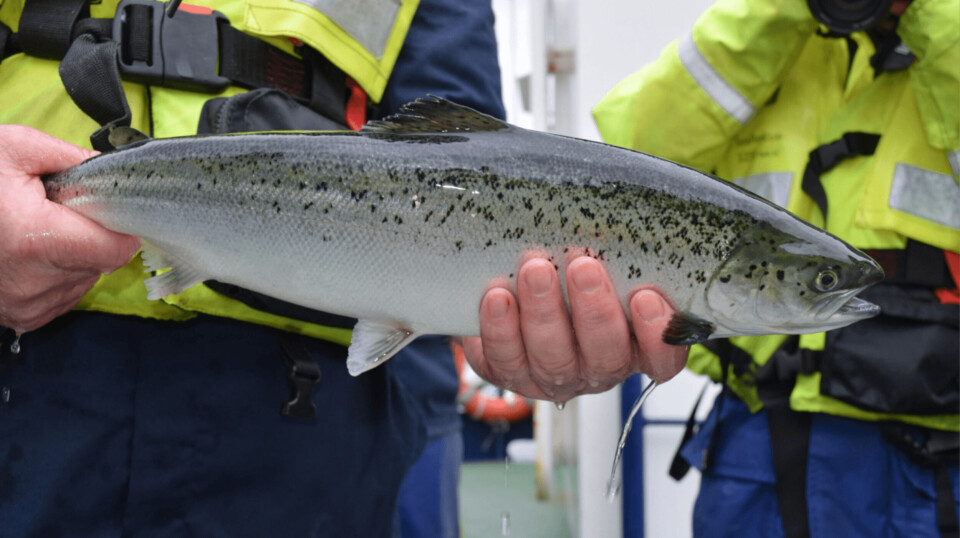
New study seeks to fill ‘major gaps’ in understanding of sea lice
Scotland salmon farmers help fund research which may improve dispersal modelling
Salmon farmers Mowi Scotland and Scottish Sea Farms (SSF) are to help fund a project aimed at learning more about the salmon louse Lepeophtheirus salmonis to strengthen dispersal modelling used to manage and predict lice outbreaks.
Mowi and SSF will contribute £5,000 per year to the 40-month study to cover research costs.
The project will be carried by a PhD candidate supervised by senior scientists at the Scottish Association for Marine Science (SAMS) and Stirling University’s Institute of Aquaculture. The PhD position is currently being advertised by SAMS and its associate institution, the University of the Highlands and Islands (UHI).
Salmon farmers argue that new regulations being imposed by the Scottish Environment Protection Agency (SEPA) place too much emphasis on modelling and not enough on evidence – or lack of it – for the proliferation of sea lice outside salmon farms due to outbreaks within pens.
Wind and tide
Speaking at seminar organised by the Sustainable Aquaculture Innovation Council (SAIC) last year, SAMS marine biologist Dr Kim Last – who is supervising the PhD project - said current sea lice distribution models are basically focused on the movement of the water column driven by wind and tide, and a little bit of information on the behaviour of the larvae themselves.
He took part in the Marine Scotland-funded Salmon Parasite in Linnhe, Lorn and Shuna (SPILLS) project focused on testing and improving sea lice dispersal monitoring and modelling techniques in an area with several fish farms.
“After six months and 372 field samples we ended up with only 19 (salmon lice) larvae, and the conclusion was that they’re pretty rare, and they’re probably also pretty patchy,” he told the seminar.
Could be improved
In its description of the new PhD project, UHI outlines the limitations of current modelling.
“Dispersal modelling of the larval stages of sea lice has become the most useful tool to manage and predict sea louse outbreaks, and in Norway is a key component of finfish aquaculture policy and regulation,” it states.
“However, state-of-the-art modelling relies on data concerning sea louse biology, including fecundity and mortality, which requires better information on behavioural movement and abundance of larvae.
“Scotland is undergoing a review and consultation on the risk and regulation of sea lice from aquaculture (Sea Lice Risk Framework), and the Marine Directorate has identified improvements on dispersal modelling and underpinning biology and ecology data as key research priorities required to support the framework development. It is therefore timely and necessary to focus Scottish research on providing the data to underpin the regulatory and industry developments in minimising risks of sea lice in salmon aquaculture.”
It adds that there are still major gaps in our understanding of the louse’s parasitic biology and ecology.
Fecundity and fertility
The ultimate objective of the PhD project is to provide rigorous datasets to support accurate dispersal modelling of sea lice larvae, with specific objectives to:
- Determine sea louse fecundity and fertility seasonally.
- Determine respiration rates as a function of salinity and temperature representative of natural seasonal cycles.
- Determine swimming behaviour (directed swimming and activity) as a function of salinity, temperature, pressure and light, representative of natural seasonal cycles.
- Determine the importance of hydrodynamic features (salinity gradients / tidal fronts) in contributing to sea lice ‘hotspots’.
- Integrate new empirical data into sea louse dispersion models.
Scottish Sea Farms environmental modeller Tom Adams said: “Whilst research has been done before into sea louse larval ecology and biology, it’s hugely important to us that we are working with up-to-date, locally relevant data when conducting modelling for planning and management of our farm sites.
“The better our understanding of sea louse behaviour, the more accurate our assessments will be, which is why we’re fully supportive of this latest applied PhD research project.”






















































